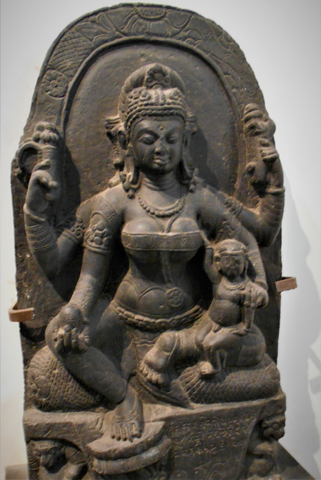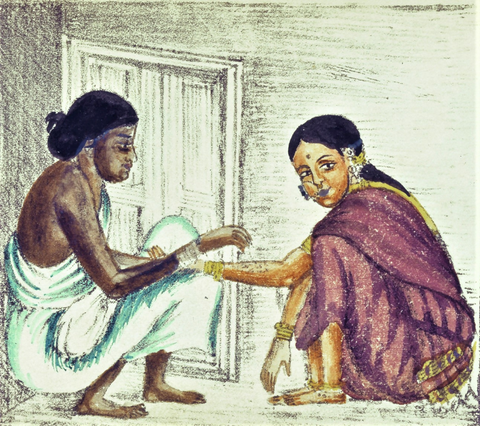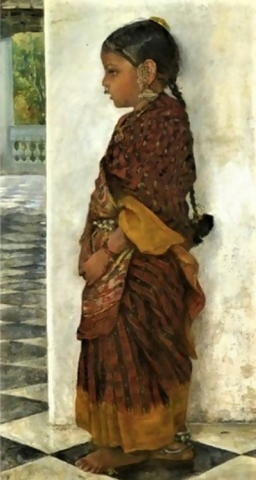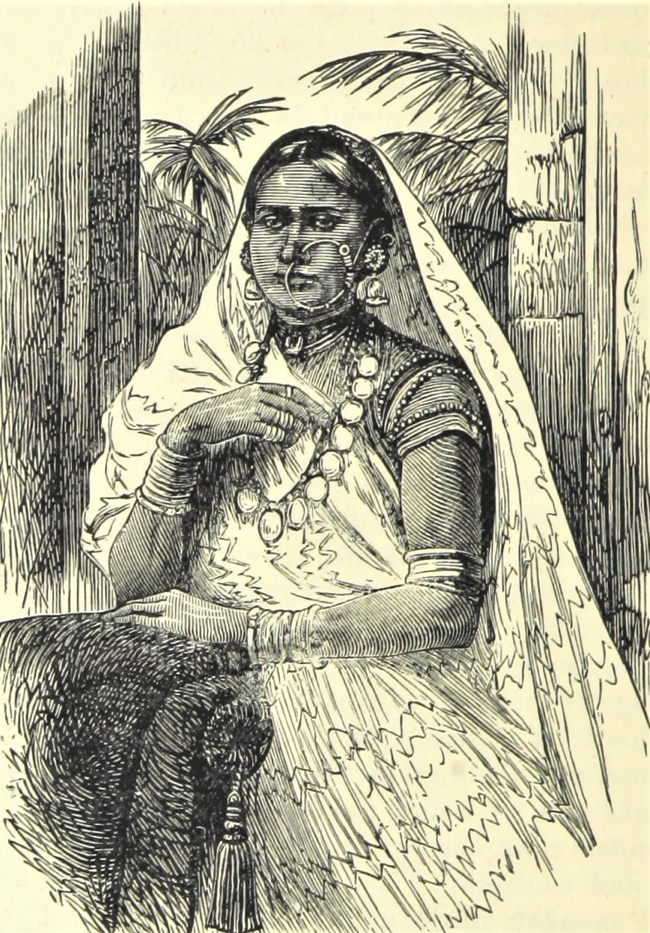Saree: The Soul of India
Saree is a quintessential garment which marks a woman out as truly Indian. Not only is it the national costume, but also a favoured garment for a special occasion. This versatile garment is equally at home in a kitchen, boardroom or a wedding. It is probably the oldest known form of clothing that is still existing and just as popular today as it was a millennia ago.
The History and Evolution of Saree
The six yards of unstitched cloth has been wrapped around the body and worn since the times of Indus valley civilization and maybe even beyond. It has been around for nearly four thousand years and maybe more. Like everything else, the saree too has evolved over time and has undergone many transformations to become what it is today.
The name sari itself evolved from an ancient garment called the sattika which is mentioned in early Hindu scriptures. Sattika is a word derived from the ancient word for a strip of cloth- sati. The garment then consisted of three pieces of unstitched cloth called the antariya, uttariya and the stanpatta. While antariya was worn around the waist, the uttariya was draped around the head and shoulders. The stanpatta which is also mentioned as kanchuki in the Hindu epics, was used to cover the breasts. This garment left the midriff and shoulders bare that could be covered by the uttariya.

The antariya was worn much like the dhoti is worn today. It later evolved into ghaghra like garment called the bhairnivasani. Uttariya can be compared to the present day chunri and dupatta which is still worn to cover the shoulders, chest and often the head and face.
There are ample examples of exquisite carvings and wall paintings that depict the way the Indian women dress in the 2nd and 1st century BC. The evidence suggests that the women of different classes and casts wore their garments differently. While women of upper caste and class covered the top of their body with a veil, the women of the lower classes left their chest bare.

Slowly over time, the two pieces of cloth morphed into a single piece of cloth. One end was pleated and draped around the waist the other was used to cover the chest and the head. The earliest sarees were worn like a dhoti, much like the Maharashtrians wear it even today.
Muslim Influence and Its Impact on Saree
With the invasion of the Muslims, the attire of the Hindus underwent a change. The Muslim influences did away with the bare chest and the women universally started wearing a garment to cover the chest and the shoulders. This is also the time when the stitched garment was introduced. According to Hindu traditions, the stitched garment was considered unholy, especially when cooking, performing rituals, etc. This practice still exists in some parts of the country and maybe one of the reasons why the saree has survived so many millennia.

British Influence on Saree
Perhaps the greatest influence on the saree came from the British. When the British women arrived in India, the Indian women still wore 6 yards of cloth draped around their body without any blouse or petticoat. It was the influence of these women that popularized the way the saree is worn today – with a petticoat and blouse.

Modern Saree, Still the favourite
The modern saree is a culmination of many different influences. The way it is draped, designs, weaves and colours that are used have all evolved since its existence. Traditionally the sarees were made of cotton or silk only. Now, of course, we have many different materials that are used to create these six yards of elegance. While the dyes that were used traditionally were only natural dyes, now, our colour palette has been enhanced by chemical dyes and colors. Influences from across the globe have changed the traditional designs, patterns and palettes too.
Every region of India has its own special sarees. They differ in material, designs and patterns as well as the weaves used to create them. There are hundreds of different types of sarees that a woman can buy.

Mandakini: An Online Saree Store
Looking at the popularity of sarees and to make the traditional weaves and designs easily available to women across the globe, Mandakini was conceived as an online saree store where women could easily buy exquisite Indian sarees online. Our wide range of sarees have delighted women for over three years.
A Brief Introduction and Its Aims
Mandakini was conceived as an online-only store and started business in 2016. The thought behind starting an online saree store was conceived with the thought of reviving old forms of saree weaves and embroidery that were now dying out for want of proper market and exposure. Our main aim was to help the weaver community, especially the women artisans and weavers who find it difficult to sustain themselves, despite their unique skills.
We are proud to say that at Mandakini, we have been able to make a difference. Women artisans and weavers have benefitted from working with us. Our feedbacks to the weavers and artisans have helped them develop their skills and designs in tune with the modern demands, thus creating a better product that is more aligned with the market expectations of today. We constantly provide support and feedback to our artists and weavers which gives them a deeper insight into the consumer psyche.
Additionally, we ensure a fair price for their labour and provide training to revive the dying traditional arts. One case in point here is revival of the art of Kasuti embroidery. With our help and support, a small family in Gadag, Karnataka, that makes and supplies hand-embroidered kasuti sarees has been able to enhance its capacity significantly thus, making their business more profitable.
Similarly, another family business that is based in Molakalamuru, Karnataka, has employed more women weavers to increase its production capacity. This has not only helped increase the business’ turnover, it has also provided employment to several women and helped them to be empowered and financially independent.
Our endeavour has inspired many women. A differently-abled woman form Belagavi, Karnataka who had lost her hand in an accident was inspired by our work. She now does stitching and embroidery with one hand and has recently started her own boutique for children wear. A single mom from Dharwad, Karnataka started supplying Kasuti sarees to us which has helped to provide her with a steady income and improve her financial status.
It is not just women from the weaver and artisan class who have been touched by Mandakini venture. A recent woman MBA graduate from Agra got inspired by the Mandakini story and did an internship with us, has decided to pursue digital marketing of such products on a full-time basis to benefit other women run brands.
Thus we have been successful in our aim of empowering the women weavers and artisans, providing them financial freedom and improving and reviving their skills so they conform to modern consumer expectations.
Why The Blog?
The idea behind starting this blog was not only to boost our online presence but also to provide our readers and customers insights into our world of sarees and traditional weaves. This blog will not only educate and inform people about sarees and help them make informed choices when buying sarees so they get the best value for their money.
This blog will also be a showcase of our new products and expose women to unique and beautiful apparels to the Indian diaspora so they can buy the gorgeous sarees online.
Mandakini blog will keep you informed of the latest developments in our little community. Keep you abreast with the stories of our weavers and artists. Take you on a journey to meet the people who create the beautiful garments you enjoy wearing so much.
With this blog, we hope to educate, inform and entertain our readers alike. Keep reading and come back for more. So watch out for this space to discover more about that fascinating garment – saree.


